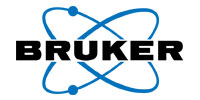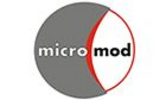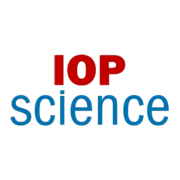9th International Workshop on Magnetic Particle Imaging
New York, USA | 2019, March 17 - 19
Thank you all for a great workshop IWMPI2019 with inspiring conversations, interesting talks and innovative posters. We hope you all returned back home safe and sound with plenty of new ideas.
The 9th IWMPI took place at the New York University (NYU) Langone Health, USA on March 17 - 19, 2019.
Scientific Program
| Time | Session |
| from 11:15 | Registration |
12:00 - 15:00 | Tutorial Lecture 1: Introduction into MPI Instrumentation and Image Reconstruction Lecture 2: Introduction into Magnetomotion Lecture 3: MPI Application Review in Diagnostics, Monitoring and Therapy |
15:30 - 16:00 | Workshop Opening - Welcome Speeches Youssef Zaim Wadghiri; Director of Preclinical Imaging; NYU School of Medicine – NYU Langone Health |
16:00 - 17:30 | Session 1: Instrumentation I Dynamic 2D Imaging with an MPI Scanner Featuring a Mechanically Rotated FFL Design of a Preclinical Field Free Point/Field Free Line Hybrid MPI Scanner MPI meets CT: first hybrid MPI-CT scanner 1D Multi-Frequency MPI by passive and active Drive Field Feed-Through Compensation Magnet Assembly Design for a Human-Scale Functional Magnetic Particle Imager (fMPI) First human-sized Magnetic Particle Imaging Device for Cerebral Applications |
17:30 - 18:00 | Keynote MPI: The Future of Biomedical Molecular Imaging? MPI shows great optimism for molecular imaging: potentially low cost device, shelf-stable molecular probes, no ionizing radiation, direct detection of the probe, and relatively high sensitivity for detection. Drawing upon other modalities, this lecture will describe the requirements for successful MPI applications. The ultimate utility of MPI is somewhat bounded by the need to utilize nanoparticle-based probes which are limited in their pharmacokinetic properties and biodistribution. Acknowledging and working within these constraints still leaves a broad field of impactful application. Here we will describe possible avenues for molecular probes that take advantage of this powerful emerging technology. |
| 18:00 - 19:30 | Get Together with small warm-up drink to prepare you for St. Patricks Day in New York. |
| Time | Session |
9:00 - 10:25 | Session 2: Reconstruction, Theory, and Nanoparticle Physics I Fast temporal regularized reconstructions for magnetic particle imaging Spatio-temporal concentration reconstruction using motion priors in magnetic particle imaging Experimental study on MPI motion artefacts Multi-Patch Magnetic Particle Imaging of a Phantom with Periodic Motion Pulsed MPI for Improved Resolution and Contrast Low Rank Approach to Sparse System Matrix Recovery for MPI Background Removal by Mixing Factor based Filtering of the System Matrix |
10:30 - 11:30 | Poster Session 1 P01 Interpretation of Cartesian Data based on a Simulated Human-Sized MPI Brain Imager P02 Neural Network for Reconstruction of MPI Images P03 Determining the Relation between Iron Mass and Spatial Resolution for a Human-Sized Magnetic Particle Brain Imager P04 Rapid PCI: An Alternative X-space Based Image Reconstruction for Rapid Scanning Trajectories P05 A Super-Resolution Network for MPI P06 First MPS MObile Universal Surface Explorer P07 Combined Active and Passive Cancellation of Receive Chain Direct Feedthrough P08 Verification of the Linear System Response of a Single-Sided MPI Device P09 Towards resolution phantoms for multi-centric comparison of instrumentation P10 Towards particle independent calibration of magnetic particle spectrometers: Initial experiments P11 Statistical Significance in Thrombus Characterization Using Magnetic Nanoparticle Spectroscopy of Brownian RotationJ. B. Weaver, H. Khurshid, C. V. Weaver, S. W. Gordon-Wylie, D. Ness, Y. Shi, D. A. Schartz, E. Demidenko, W. Wells, and C. J. Eskey P12 A Schematic Kidney Phantom for Magnetic Particle Imaging P13 Multi-modality Imaging of Prostate Cancer in Mice using Magnetic Particle Imaging, Magnetic Resonance Imaging and Near-infrared ImagingH. You, W. Shang, H. Hui, X. Yang, J. Tian, and L. Wang P14 System matrix dependent image quality of SPION infused polycaprolactone P15 Evaluation of two iron oxide nanoparticle systems for their capabilities in MRI and MPI P16 Estimation of M-H curve of NMPs using optimization technique P17 Effects of heating on tissue – safety limits and therapeutic aspects for MPI |
11:30 - 12:55 | Session 3: Reconstruction, Theory, and Nanoparticle Physics II Magnetic Field Based Similarity Measure for System Matrices in Magnetic Particle Imaging Harmonic Dispersion X-Space MPI Discontinuous Kernels for the Reconstruction of Magnetic Particle Distributions with Jump Discontinuities Parameter estimations of magnetic particles: A comparison between measurements and simulations Core and hydrodynamic sizes dependence of harmonic signal in blood-pooling magnetic nanoparticles Observation of correlated magnetic particle imaging and magnetic hyperthermia metrics in iron oxide nanoparticles Nanoparticle core size optimization for MPI |
13:00 - 14:00 | Lunch Session Live MPI Demo and Lunch - Magnetic Insight |
14:15 - 15:30 | Session 4: Application I White Blood Cell Tracking with Magnetic Particle Imaging: Towards Sensitive and Radiation-Free Diagnosis of Infection and Inflammation Filling in the voids left by Cellular MRI Virtual Brain Electrode (VIBE): Selective Magnetic Manipulation of Blood Conductivity Dynamic Multi-Contrast Imaging of Two Different Tracer Materials in a Healthy Mouse Functional Magnetic Particle Imaging of Magnetic Nanoparticles in a Cellular Environment Sub-second bolus injection for increasing local sensitivity during the first pass of magnetic particle imaging |
15:30 - 16:45 | Poster Session 2 P18 Dynamic imaging of particle properties in 2D multi-spectral Magnetic Particle Imaging P19 FISTA reconstruction with particle derived filtering for Isotropic 3D FFL images in MPI P20 Wrestling the Devil of Wasting Time: MPI System Matrix Recovery by Deep Learning P21 A Strategy for the Extension of the Kaczmarz Algorithm to Different Priors P22 Multiresolution Magnetic Particle Imaging of Vessel Structures with Support Detection P23 Image Reconstruction Method of Magnetic Particle Imaging Using Orthogonality of Singular Value Decomposition P24 A self-compensating coil setup for combined magnetic particle imaging and magnetic fluid hyperthermia P25 A Concept for an Adjustable MPI System with Permanent Magnets P26 Sequential scanning of larger objects without focus field P27 Long-term Stability Analysis of a Preclinical Magnetic Particle Imaging System P28 Displacement Measurement for New MPI System Based on Vibrating Magnetic Nano Particles P29 Development of a simulation model for magnetic nanoparticle imaging using ultrasonic vibration P30 Electron Paramagnetic Resonance and Magnetic Particle Imaging: perspectives for co-imaging P31 Improvement of Sensitivity and Spatial Resolution in Magnetic Particle Imaging Using Fractionated Magnetic Particles P32 System function analysis for estimation of MPI tracer resolution without phantom measurement P33 Engineered Protein‐Iron Oxide Hybrid Biomaterial as Magnetic Imaging‐traceable Drug Delivery P34 Spectral Decomposition of Particle Mobility in Magnetic Particle Spectroscopy P35 Sentinel node procedure in prostate and bladder cancer utilizing Differential Magnetometry: A first patient trial P36 Stroke Detection using Magnetic Particle Imaging: A Phantom Study using a Human-sized Brain Phantom P37 Development of a dynamic bolus phantom system for magnetic particle imaging P38 Evaluation of migration timespan of SPION with MPS and AAS within a healthy mouse model for sentinel lymph node detection in breast cancer P39 Tracer Temperature During MPI-frequency magnetic field excitation |
16:45 - 18:00 | Session 5: Application II Determining Perfusion Parameters using Magnetic Particle Imaging: A Phantom Study using a Human-Sized Flow Phantom Artifact-Free Imaging of the In-Stent Lumen of Coronary Stents with MPI – A Proof of Concept Interventional Devices Tailored for MPI Hyperthermia and Imaging Performance of Hybrid Implant Materials Simultaneous Actuation and Visualization of a Magnetically Coated Swimmer with MPI Percutaneous transluminal angioplasty (PTA): MPI vs. X-ray guidance |
18:00 - 18:10 | Editor's Session: quo vadis IJMPI |
18:10 - 19:00 | Footwalk to Pier: Skyport Marina and Boarding |
19:00 | Cruise |
| Time | Session |
9:00 - 10:15 | Session 6: Synthesis and Spectroscopy Aqueous micromixer synthesis to gain reproducible, high performance MPI tracers Suspensions of sub-micron microfabricated magnetic discs Effect of dextran on the nucleation and growth of nanostructures with an In-situ Magnetic Particle Spectrometer (INSPECT) Intracellular dynamics of superparamagnetic iron oxide nanoparticles for MPI Magnetic nanoparticles based binding imaging with a scanning magnetic particle spectrometer One-Dimensional Multi-Frequency Spectrometer |
10:20 - 11:20 | Poster Session 3 P40 An Inline Reconstruction Technique for MPI P41 MPI using sub-voxel focus field offsets P42 Multi-parametric image reconstruction in Magnetic Particle Imaging P43 Selection-Field-Induced Warping in X-Space MPI P44 A novelty 2-D temperature imaging method by scanning magnetic nanoparticles thermometer P45 Exploring parameters of magnetic particles in 1D field excitation P46 3D printed magnetic composites as phantoms for Magnetic Particle Imaging P47 A Low Cost 3D Printed Magnetic Particle Spectrometer for the Undergraduate Laboratory P48 MPI Velocity Mapping in a coronary Vessel Phantom P49 Anatomical Rat Phantom for MPI P50 Imaging full body biodistribution and signal properties of magnetic nanoflowers P51 Magnetically initiated remote controlled drug release from magnetic microspheres P52 Mechanical Design of a Human-Scale Magnetic Particle Imager for Functional Brain Imaging (fMPI) P53 Evaluation of FFP Performance in Halbach and Radial Permanent Magnet Systems P54 MRI-based field of view selection for precise, real-time targeting in MPI P55 Implementation of a Heating Coil Insert for a Preclinical MPI Scanner Designed Using DEPSO P56 Sample Temperature Control in a Three-Dimensional Magnetic Particle Spectrometer |
11:20 - 12:30 | Session 7: Application III Generalizing In Vivo ELISA Spectroscopic Methods Using Antibody Targeted Nanoparticles synomag®: The New High-Performance Tracer for Magnetic Particle Imaging Long-term stable multimodal solid-state measurement phantoms for quantitative magnetic particle imaging Confounding Effects of Temperature and Viscosity Towards Relaxation Mapping Improved depth sensitivity by separation of excitation and detection coils |
12:40 - 13:40 | Lunch Session Bruker: Achievements of the MPI community – Time is of the essence |
13:50 - 14:50 | Session 8: Instrumentation II Feasibility of a spatial resolution enhancement by a passive dual coil resonator (pDCR) insert for large bore MPI systems Towards a Single-Sided FFL MPI Scanner for in vivo Breast Cancer Imaging Dynamic Imaging with a 3D Single-Sided MPI Scanner Flow of Magnetic Nanoparticles detected by 2n Harmonic Responses using HTS SQUID Array A Rabbit Sized Field-Free-Line Magnetic-Particle-Imaging Scanner – Past, Present, and Future |
14:50 - 15:00 | Wrap-up and Farewell |
15:30 | Lab Tour |
Partners and Exhibitors
Endorsements
Details about Keynote and Tutorials
Peter Caravan, Athinoula A. Martinos Center for Biomedical Imaging, Department of Radiology, Massachusetts General Hospital, USA
MPI shows great optimism for molecular imaging: potentially low cost device, shelf-stable molecular probes, no ionizing radiation, direct detection of the probe, and relatively high sensitivity for detection. Drawing upon other modalities, this lecture will describe the requirements for successful MPI applications.
The ultimate utility of MPI is somewhat bounded by the need to utilize nanoparticle-based probes which are limited in their pharmacokinetic properties and biodistribution. Acknowledging and working within these constraints still leaves a broad field of impactful application. Here we will describe possible avenues for molecular probes that take advantage of this powerful emerging technology.

| Peter Caravan | |
| 1997 | PhD in Chemistry, University of British Columbia |
| 1998 | Post-doctoral fellow, Chemistry, Université de Lausanne |
| 04/07-02/08 | Instructor, Radiology, Harvard Medical School |
| 02/08-09/13 | Assistant Professor, Radiology, Harvard Medical School |
| 10/13 - | Associate Professor, Professor, Radiology, Harvard Medical School |
| 2014 - | Co-Director, Institute for Innovation in Imaging: Establish, direct, and manage translational imaging institute |
Jochen Franke, Product Manager Magnetic Particle Imaging, System Engineering & Integration, Bruker BioSpin MRI, Germany
The scope of the first part of this tutorial is to present an overview of signal generation and spatial encoding schemes used nowadays in Magnetic Particle Imaging. State-of-the-art MPI scanner topologies will be identified ranging from classical Field-Free-Point and Field-Free-Line systems to single-sided, traveling-wave and hybrid imaging systems. A brief description of magnetic field components with their field requirements and their functionality will be highlighted. With the help of block diagrams, MPI system components of classical signal chains will be described and characterized.
The second part of this tutorial covers the basic introduction of state-of-the-art reconstruction techniques used in Magnetic Particle Imaging. At most, the differences and similarities between the frequency- and time-space reconstruction approach will be addressed. With this overview, advanced techniques such as enlarged field of view or multi-color reconstruction will be discussed. Model-based reconstruction approaches and the usage of complementary information from other modalities will lead to the outlook and discussion section.
For all topics addressed during this tutorial, scientific papers will be highlighted to provide in-depth training material.


Jochen Franke studied Engineering Physics and Biomedical Engineering at the University of Applied Sciences Münster (Germany) and the Technical University RWTH Aachen (Germany). His PhD on “MPI-MRI hybrid imaging systems” he performs at Bruker BioSpin MRI, Ettlingen (Germany) and the Technical University RWTH Aachen (Germany). In 2016 Jochen became the Group Leader MPI Systems and Integration and in 2018 the Product Manager MPI Systems at Bruker BioSpin MRI, Ettlingen (Germany).
Klaas Bente, German Federal Institute for Materials Research and Testing (BAM), Germany
Many motile microorganisms swim and navigate in chemically and mechanically complex environments, such as the human vascular system. These organisms can be functionalized and directly used for applications (biohybrid approach), but also inspire designs for fully synthetic microbots. The most promising designs of biohybrids and bioinspired microswimmers include one or several magnetic components, which lead to sustainable propulsion mechanisms and external controllability.
This tutorial addresses such magnetic microswimmers, which are often studied in view of certain applications, mostly in the biomedical field. First, propulsion systems at the microscale are reviewed and the magnetism of microswimmers is introduced. The presentation of state-of-the-art magnetic biohybrids and bioinspired microswimmers is structured gradually from mostly biological systems toward purely synthetic approaches. Finally, currently less explored aspects of this field ranging from in vivo imaging to swarm control are discussed.


Klaas Bente studied Medical Engineering Science and did his PhD on real-time field-free line MPI at the Institute of Medical Engineering at the University of Lübeck, Germany, in 2016. Thereafter, he worked as a postdoc at the Max Planck Institute of Colloids and Interfaces in Potsdam, Germany, focusing on magnetic microswimmer imaging. He now works as a scientist on ultrasound imaging at the German Federal Institute for Materials Research and Testing (Bundesanstalt für Materialforschung und -prüfung, BAM), Berlin, Germany.
Steve Conolly, Professor of Bioengineering and Electrical Engineering and Computer Sciences, UC Berkeley, USA;
Patrick Goodwill, Chief Technical Officer, Magnetic Insight, USA
MPI research has expanded beyond hardware and groups are now working on applying MPI to solve problems in scientific research and medicine.
In the first half of this tutorial we discuss some of the latest animal research being tested on MPI systems around the world. These applications span immune and cell tracking, cancer imaging, brain perfusion imaging, gut bleed detection, and lung ventilation-perfusion imaging.
In the second half of this tutorial, we discuss combined MPI/RF hyperthermia. In traditional RF hyperthermia, the application of high frequency, high amplitude magnetic fields heats up nanoparticles in the sample. The heating can have myriad applications including heating tumors to therapeutic temperatures and releasing payloads of interest such as drugs. We discuss how combining RF hyperthermia with MPI gives new opportunities, including spatial control of the heating to millimeter-scales, and real-time monitoring of the therapeutic heat dose.



Steve Conolly is a Professor of Bioengineering and Electrical Engineering and Computer Sciences at UC Berkeley, where he holds the Montford G. Cook Endowed Chair. He was elected Chair of the UC Berkeley-UCSF Joint Graduate Group in Bioengineering from 2006-2009. He currently serves as Vice Chair of Instruction in BioE at UC Berkeley. Dr. Conolly specializes in medical imaging and biosensing hardware, with a focus on Magnetic Particle Imaging and Magnetic Resonance Imaging. Prof. Conolly received his B.S in Electrical Engineering from Boston University, and his M.S. and Ph.D. in Electrical Engineering from Stanford University. Dr. Conolly has 30 patents in various stages of approval, and more than half of these have been licensed by industry.
Patrick Goodwill is the Chief Technical Officer at Magnetic Insight, Inc. In his role at the company, he is responsible for development of the MOMENTUM MPI imager, the first self-shielded commercial MPI system. Previously, he developed multiple generations of MPI imagers as a research scientist advised by Prof. Conolly. Dr. Goodwill received his B.S. and M.S. in Electrical Engineering from Stanford University, and a Ph.D. in Bioengineering from UC Berkeley.











